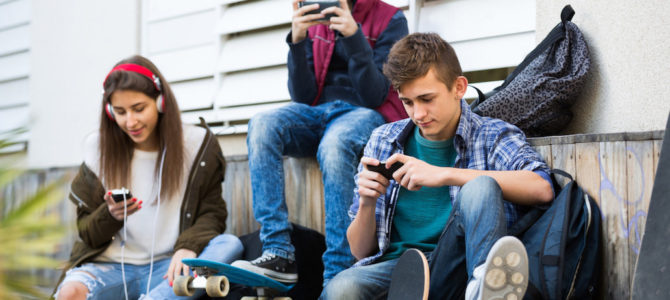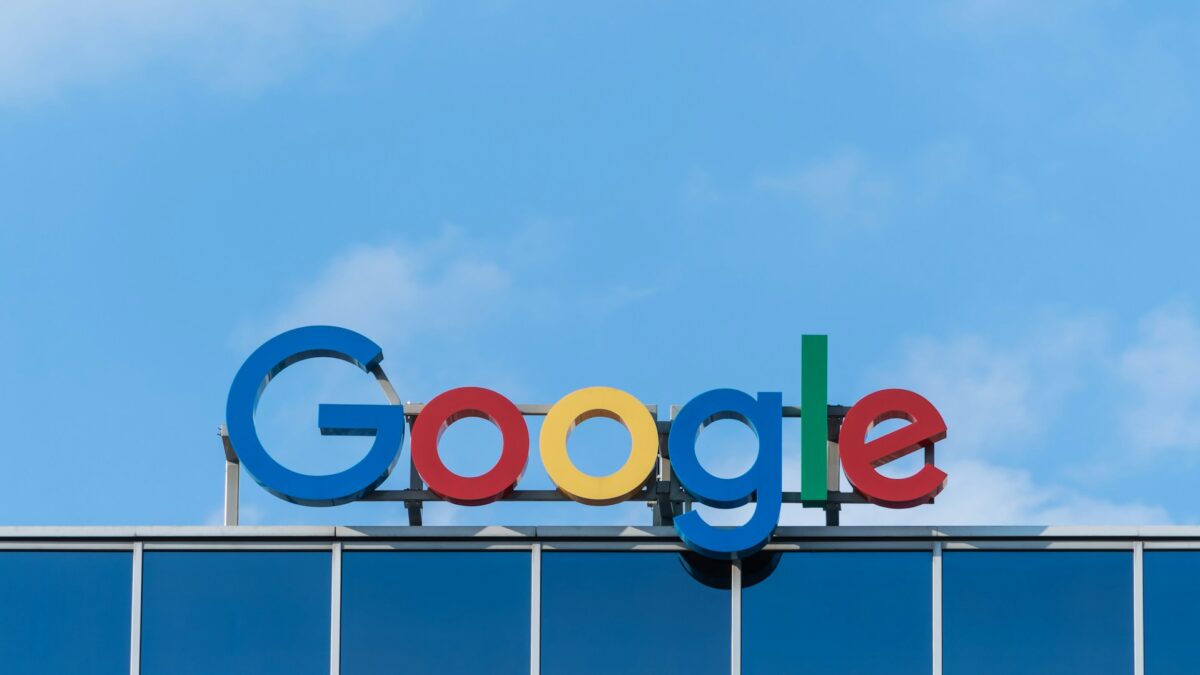
A group of Apple investors are calling on the company to do something about smartphone addiction among children and teenagers, claiming it’s a public health crisis and that Apple has a responsibility to address it. The Wall Street Journal reported over the weekend that Jana Partners LLC and the California State Teachers’ Retirement System, or Calstrs, which control about $2 billion of Apple shares, sent a letter to Apple urging it to develop more tools for parents to control smartphone use and citing evidence that suggests smartphones are having “unintentional negative consequences.”
The activist investors are sort of stating the obvious here. Anyone with a smartphone and a Twitter account knows they’re addictive. And anyone who’s ever seen a toddler mesmerized by an iPhone or an iPad should be wary of their long-term effects.
These intuitions are now being augmented by a growing body of research that raises serious questions about what smartphones and social media are doing to children and teens who are constantly exposed to them. The investors cite some of this research in their letter to Apple:
The average American teenager who uses a smart phone receives her first phone at age 10 and spends over 4.5 hours a day on it (excluding texting and talking). 78% of teens check their phones at least hourly and 50% report feeling ‘addicted’ to their phones. It would defy common sense to argue that this level of usage, by children whose brains are still developing, is not having at least some impact, or that the maker of such a powerful product has no role to play in helping parents to ensure it is being used optimally. It is also no secret that social media sites and applications for which the iPhone and iPad are a primary gateway are usually designed to be as addictive and time-consuming as possible, as many of their original creators have publicly acknowledged.
That last is likely a reference to Sean Parker, the founding president of Facebook, who, in a November interview with Axios, explained in candid terms how he and the other early architects of Facebook designed it to “consume as much of your time and conscious attention as possible.” How? By running it like a slot machine: “that means that we need to sort of give you a little dopamine hit every once in a while, because someone liked or commented on a photo or a post or whatever. And that’s going to get you to contribute more content, and that’s going to get you… more likes and comments.”
Parker described this process as a “social-validation feedback loop” that works by “exploiting a vulnerability in human psychology.” What’s more, he said that he and other Silicon Valley pioneers like Mark Zuckerberg and Instagram co-founder Kevin Systrom “understood this consciously. And we did it anyway.”
Smartphones and Social Media Are Making Us Miserable
The results speak for themselves: most people simply can’t resist Facebook. The number of Facebook users worldwide has grown from 100 million in 2008 to more than 2 billion today. Smartphones just make it all the harder to resist. According to the Pew Research Center, 77 percent of American adults now own a smartphone, 69 percent use some kind of social media (mostly Facebook), and the vast majority of us check our social media accounts at least once a day. Last March, the analytics firm Flurry found Americans spend on average five hours a day on their mobile devices, up 20 percent compared with the end of 2015.
The long-term effects of that much screen time on kids and teens are largely unknown, but researchers are trying to map it out. The investors leaning on Apple are working with Jean M. Twenge of San Diego State University, whose recent book, “iGen,” chronicles how smartphone and social media inundation are affecting children and teens.
In a widely-read article previewing her book for The Atlantic last fall, Twenge wrote about one of her subjects, a 13-year-old girl in Houston, Texas, who “spent most of the summer hanging out alone in her room with her phone. That’s just the way her generation is, she said. ‘We didn’t have a choice to know any life without iPads or iPhones. I think we like our phones more than we like actual people.’” Twenge, a psychologist who studies generational differences, defines iGen thus:
Born between 1995 and 2012, members of this generation are growing up with smartphones, have an Instagram account before they start high school, and do not remember a time before the internet. The Millennials grew up with the web as well, but it wasn’t ever-present in their lives, at hand at all times, day and night. iGen’s oldest members were early adolescents when the iPhone was introduced, in 2007, and high-school students when the iPad entered the scene, in 2010. A 2017 survey of more than 5,000 American teens found that three out of four owned an iPhone.
The advent of the smartphone and its cousin the tablet was followed quickly by hand-wringing about the deleterious effects of ‘screen time.’ But the impact of these devices has not been fully appreciated, and goes far beyond the usual concerns about curtailed attention spans. The arrival of the smartphone has radically changed every aspect of teenagers’ lives, from the nature of their social interactions to their mental health. These changes have affected young people in every corner of the nation and in every type of household. The trends appear among teens poor and rich; of every ethnic background; in cities, suburbs, and small towns. Where there are cell towers, there are teens living their lives on their smartphone.
We shouldn’t need extensive academic studies to tell us what iPhone addiction and constant social media might do to a young person (or anyone, for that matter). As it happens, the studies show what you’d expect: depression, anxiety, isolation. “It’s not an exaggeration to describe iGen as being on the brink of the worst mental-health crisis in decades,” writes Twenge, citing evidence that smartphone-addicted teens spend less time with friends, less time outdoors, less time driving, dating, and sleeping. “Much of this deterioration can be traced to their phones,” she writes. “All screen activities are linked to less happiness, and all nonscreen activities are linked to more happiness.”
Twenge isn’t alone in this view. In 2015, CNN partnered with child development experts to study the social media feeds of 200 eighth-graders across the country. The project, called #Being13, found some disturbing trends, like pervasive anxiety among teens about what’s happening online, “largely due to a need to monitor their own popularity status, and defend themselves against those who challenge it.”
That means keeping track of friends and enemies alike. “I want to see what they’re talking about and if they’re talking about me,” said one of the study’s subjects. “Because if they’re talking about me, I’m going to talk about them.” Some subjects admitted to checking their social media feeds more than 100 times a day. The more they check their feeds, the study found, the more distressed they became.
Despite the distress and anxiety, many of the teens in the study said giving up social media would be worse. “I would rather not eat for a week than get my phone taken away. It’s really bad,” said one 13-year-old. “I literally feel like I’m going to die.” Another said, “When I get my phone taken away, I feel kind of naked. I do feel kind of empty without my phone.”
Whether we fully realize it or not, an entire generation of Americans are growing up like this.
No One Is Going to Fix This For You
Good intentions notwithstanding, the proper response to mass smartphone addiction is not to demand that companies like Apple and Facebook fix the problem, not least because they can’t. As Apple itself pointed out in response to the investor letter, parental controls have been part of Apple’s mobile software since 2008. If parents want to limit what kinds of apps their children can use, or how often they can use them, they’re free to do just that.
So why aren’t they? Maybe it’s laziness, or inattentiveness, or simply ignorance about how much time their kids are really spending on social media. But is it any wonder that adults who can’t seem to regulate their own use of social media are incapable of regulating how much their kids use it?
In that Axios interview, Parker said the pervasiveness of social media “probably interferes with productivity in weird ways. God only knows what it’s doing to our children’s brains.” We’re starting to figure that out, and the more we discover about it the more social media begins to look like something that, for all its facile appeal, is really quite dangerous—not just for our children, but for all of us.
Over the past decade we’ve embarked on a massive social experiment with new technologies that we barely understand. For some reason, we just assumed they were benign. It seems clear now that we were wrong: they aren’t benign, and they weren’t designed to be.
We willingly allowed smartphones and social media into our lives, and if we want to avoid their deleterious effects, we’re going to have to willingly cut them out or severely limit them. Some families are attempting to do this with things like the Wait Until 8th pact, in which parents promise not to give their kids smartphones until the eighth grade.
Even that might be asking too little, but the point is that no company or government agency is going to do that for you or otherwise fix this. All of us, each in our own families and private lives, are going to have to do it ourselves, if we can. The immediate question is, how do we go about logging out, turning off our phones, putting them away? The deeper question is, do we really want to? And why not?









